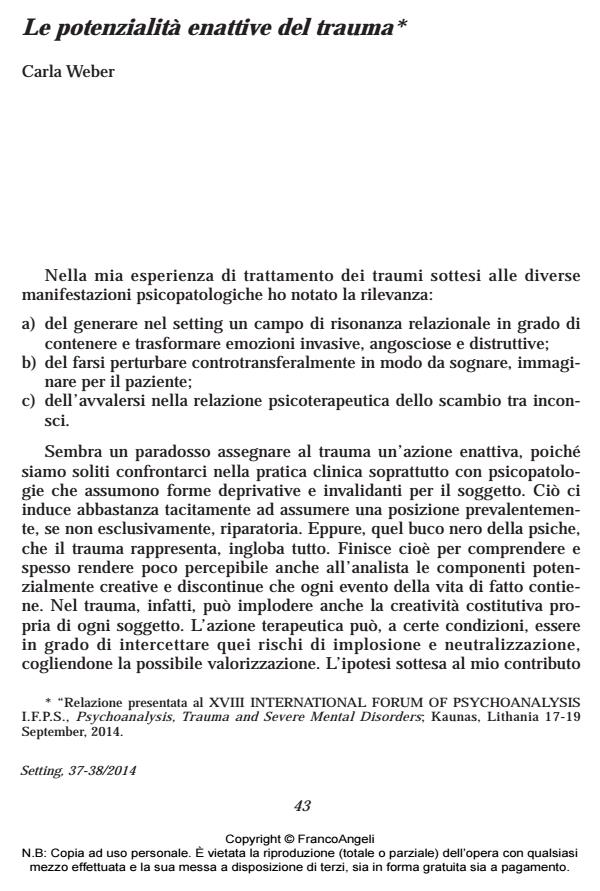Le potenzialità enattive del trauma
Journal title SETTING
Author/s Carla Weber
Publishing Year 2015 Issue 2014/37-38
Language Italian Pages 19 P. 43-61 File size 445 KB
DOI 10.3280/SET2014-037002
DOI is like a bar code for intellectual property: to have more infomation
click here
Below, you can see the article first page
If you want to buy this article in PDF format, you can do it, following the instructions to buy download credits

FrancoAngeli is member of Publishers International Linking Association, Inc (PILA), a not-for-profit association which run the CrossRef service enabling links to and from online scholarly content.
The paper proposes to use, in the working-out and transformation of trauma, the active forms of vital forces that belong to the subject’s constitutive creativity so that the can go through rearrangements of his hurt, violated, dull, disconnected psychic life. In her clinical experience, the Author could capitalize these residual vital forces especially with subjects severely affected by a sudden breakdown in their highest quality performance in arts or in competitive sports. In their treatment she had to deal with the possibility of understanding how tackling psychopathological vulnerability not only in a fixing perspective, but in order to enhance not so much resilience, but the generative potential of breaking a psychic consolidated habit to new forms of individuation. Trauma seems to contain, beyond the components of loss and disintegration, also aestetic opportunities, of a way out from the usual self, to open to paths of re-composition of life. This paper will deal of this second possibility, especially for research and practice related to the therapeutic techniques, through the presentation of clinical material of a case and the first provisional indications that can be inferred.
Carla Weber, Le potenzialità enattive del trauma in "SETTING" 37-38/2014, pp 43-61, DOI: 10.3280/SET2014-037002